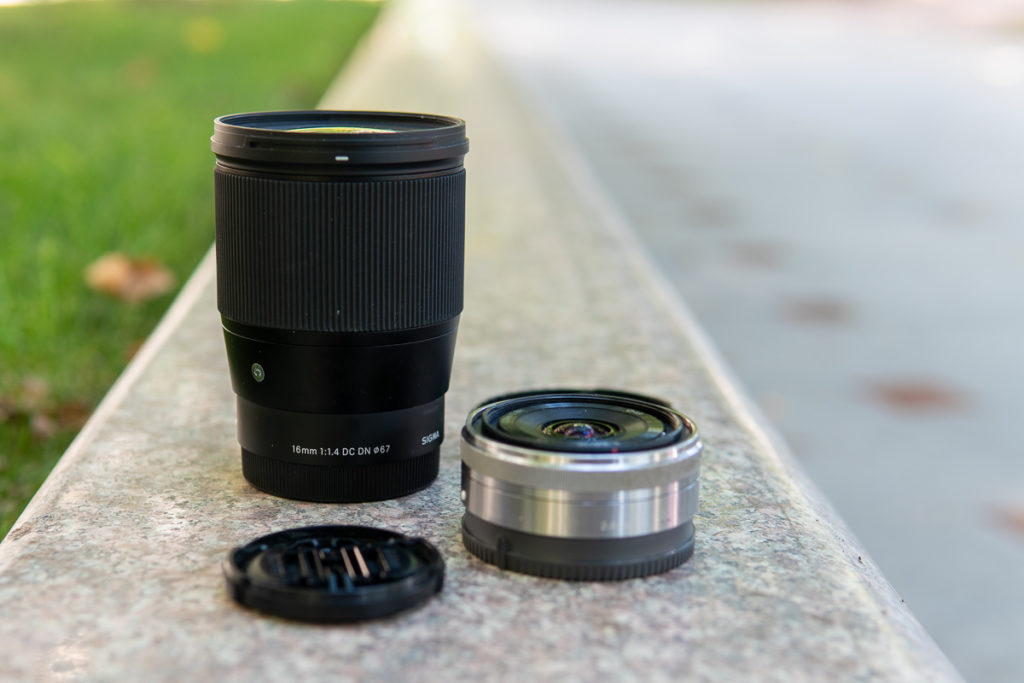I feel there’s nothing much to say about the Sigma 16mm f/1.4 DC DN lens. I’ve been shooting with the 30mm version for over a year and a half. I also tested the 56mm lens. All three are a testament to Sigma’s dedication. But if you have a couple of minutes to spare, here’s what you need to know about Sigma’s widest lens available for Sony E Mount.
It’s big and heavy
There’s no denying it: at over 400 grams (14.3oz), it’s as heavy as my Sony a6300. It needs 67mm filter threads and it’s about 9 centimeters long. It’s not a discrete lens you want to shoot all day on the streets of a busy district. Some will say the size and weight are flaws. But most shooters won’t mind them, because of the following reason.

Sharpness is stellar
It shouldn’t come as a surprise. The 16mm lens has no competition. The 16mm f/2.8 Sony Pancake is hopeless in the corners (read my review), the 16-50mm kit lens is perfectly mediocre, and the 16-70mm f/4 Zeiss is just okay. While I’m at it, I’m going to throw in the 10-18mm f/4 Sony. All of these can’t compare to what Sigma has achieved. All I had to do was nail the focus, which on the a6300 is quite easy. However, sharpness doesn’t tell the whole story.
Chromatic aberration is an issue
This also isn’t a surprise. While shooting with my 30mm in the winter, I noticed extreme CA on high-contrast edges. Unfortunately, Sigma has the same issue with the 16mm f/1.4. Sometimes I could fix it with a press of a button. Sometimes not. It all depends on your style of shooting. It’s safe to say though that this problem doesn’t make me recommend the lens less.
It is a lens worth buying
At $399 you won’t find a better lens for the money. It’s good for street photography, architectural shots, astrophotography, wide portraits, and vlogging. The only thing missing is OSS, but at this price, I can’t ask for anything more the lens already offers. Rather than writing more about it, I’ll let you with some photos:















